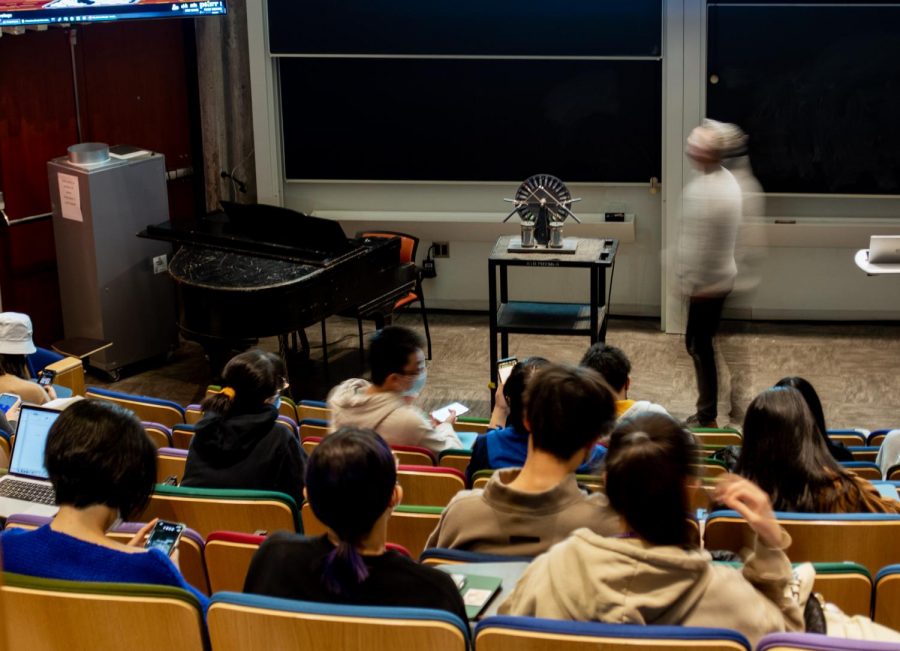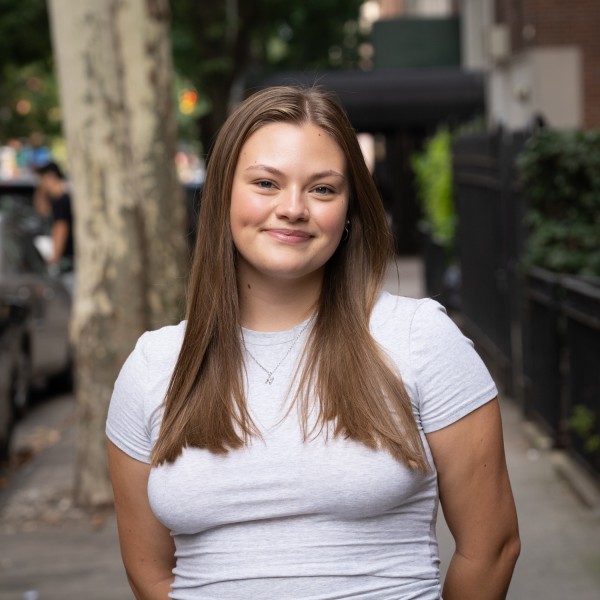Faculty research challenges NYU’s claims of little to no risk of classroom COVID-19 transmission
As NYU returns to full in-person instruction this semester, faculty have expressed safety concerns with university COVID-19 prevention policies.
Students in class at the 6 Washington Place academic building. NYU faculty have voiced concerns about the university’s COVID-19’s safety guidelines. (Staff Photo by Manasa Gudavalli)
October 7, 2021
CAS chemistry professors Michael Ward and Stephanie Lee are currently leading an investigation to test the carbon dioxide levels in NYU classrooms and determine the quality of air circulation. Early findings have shown that levels of carbon dioxide are higher than expected.
“We are still acquiring data in order to collect replicate measurements and control for variables — part of our training as scientists,” Ward said. “The data is very preliminary at this stage and the number of rooms being measured by our small group of instructors is limited.”
Bart Kahr, a CAS chemistry professor involved in the investigation, suggested for classrooms to open windows in an effort to improve air circulation.
A similar study conducted by researchers in the United Kingdom detailed a model predicting that the risk of COVID-19 transmission in academic environments was correlated with carbon dioxide levels.
“Our work emphasises the importance of good ventilation in workplaces and in schools,” Henry Burridge, a professor at Imperial College London who led the study, said in a press release. “The model demonstrates that by managing the ventilation and occupancy levels of shared spaces we can manage the risk of airborne infection by a virus like SARS-CoV-2, which causes COVID-19.”
NYU spokesperson John Beckman confirmed that the university is aware of the early findings of the study, but said that the school continues to believe that transmission in classrooms is nonexistent, citing contact tracing data.
“We take seriously the concerns of our faculty, and we will look at any room where their data suggests grounds for concern, just as we would respond to any complaint about air temperature,” Beckman wrote in a statement to WSN. “It’s important to note that the rate of COVID-19 cases has only gone down as the semester progresses. They declined from 1.47% the week of Sept. 13 to 1.1% the week of Sept. 20.”
As of Oct. 3, the university reported that 99% of students and faculty are fully vaccinated, and so are not required to keep a six-foot distance when masked. However, Michelle Dent, a CAS professor, said the university’s decision to return to full in-person instruction without social distancing was too abrupt.
“NYU is to be admired for its vaccine and mask mandates,” Dent said. “Rubin Hall is a particularly difficult space. Most of those classrooms are tiny and windowless, with poor temperature regulation and little concrete evidence that there is a COVID-compliant HVAC system. Students deserve better, and so do their professors.”
NYU senior leadership reported that they have received numerous complaints about hot classrooms, which provoked concerns about air circulation, in an email sent to the university community on Sept. 21. However, the email said that warm classroom temperatures are the result of an increase of outside air circulating in classrooms.
“In line with public health guidance, we have increased the proportion of fresh (outdoor) air that’s delivered,” senior leadership wrote. “That will sometimes have the effect of making a room warmer or colder than we’re normally accustomed to, but the air handling system is working.”
CAS professor Jonathan Nagler teaches big and small classes where students are not socially distanced. He said that the university should reinforce its mask guidance by mandating N95 and KN95 masks in high-density classroom settings.
“For the large class, I both put the lecture live on Zoom and record each lecture so that any student who thinks they might be sick can avoid attending the lecture in person,” Nagler said. “That way they don’t have to put anyone else at risk.”
Similarly, CAS professor Bruce Bromley expressed concern about the lack of physical distancing among students in his approximately 15-person classes.
“I understand the science behind the guidelines predicated on a vaccinated population, but the student-crowding is real — that still concerns me,” Bromley said. “[Online classes] encourage professors and students to withdraw into their own worlds, but I wish our rooms had a bit more space in them and that they weren’t sometimes too hot.”
The union for NYU adjunct faculty, ACTUAW Local 7902, said many adjunct professors are worried about the lack of concrete data on COVID-19 cases, air ventilation and classroom densities. The group suggested that the university improve its heating, ventilation and air conditioning systems by fully eliminating indoor air recirculation.
“We remain gravely concerned that NYU is not doing all it can to keep students, faculty and staff safe on campus,” the union wrote in a statement to WSN. “We have held multiple meetings with the university seeking greater transparency on reopening and data that will allow us to assess the university’s performance on health and safety measures. NYU has consistently refused to be transparent with us.”
Correction, Oct. 7: The headline of the article has been updated to more accurately reflect the findings of the research and the content of the article. WSN regrets the error.
Contact Natalie Thomas at [email protected].

























































































































































